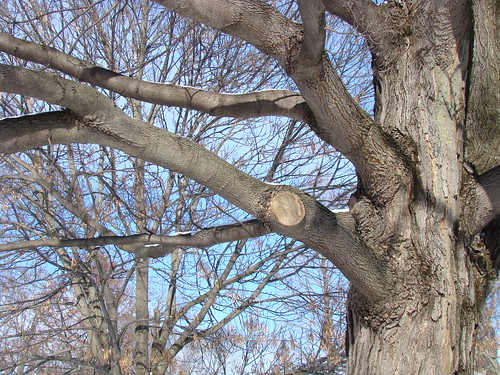
Date September 02, 2024
In the lush city of Southlake, Texas, the management and care of trees are not just about maintaining an appealing landscape but also about adopting practices that ensure the sustainability of the environment. Sustainable tree care encompasses techniques and practices that not only benefit the immediate health of the trees but also contribute to the broader goal of ecological balance and sustainability. This comprehensive guide gathered by TreeNewal explores how residents and professionals in Southlake can integrate sustainable tree care methods to enhance both the health of their trees and the overall aesthetics of their properties.

Benefits of Sustainable Tree Care
Sustainable tree care offers a myriad of benefits that extend beyond the visible beauty of well-maintained trees. Here are some key advantages:
- Environmental Health: Sustainable practices reduce chemical use, conserve water, and maintain soil health, which significantly benefits local wildlife and the broader ecosystem.
- Economic Savings: By adopting sustainable practices, homeowners and community managers can reduce costs associated with water, fertilizers, and pesticides.
- Enhanced Property Value: Properties with well-cared-for, sustainable landscapes often see an increase in property value due to their enhanced curb appeal and the growing market demand for environmentally friendly spaces.
Key Practices in Sustainable Tree Care
Adopting sustainable tree care involves several key practices that ensure the health and longevity of trees while minimizing environmental impact. Below are essential strategies tailored for Southlake residents:
Proper Tree Selection
- Choose Native Species: Opt for native tree species which are more likely to thrive in Southlake’s climate, requiring less water, fewer pesticides, and less fertilization.
- Consider the Site Conditions: Select trees that will flourish in the specific conditions of your property, considering factors such as soil type, light exposure, and space for root growth.
Efficient Water Management
- Drip Irrigation: Drip irrigation is a highly efficient watering method particularly beneficial for tree care, especially in arid climates like those in Southlake. This system delivers water slowly and directly to the soil around tree roots, where it is most needed. By targeting the root zone, drip irrigation minimizes water loss due to runoff and evaporation, ensuring that water usage is optimized and waste is significantly reduced. This method not only conserves water but also helps in maintaining the optimal moisture level in the soil, which is crucial for the health of the trees.
- Mulching: Applying organic mulch around the base of trees is a vital practice in sustainable tree care. Mulch helps retain soil moisture by reducing evaporation, which is especially valuable during hot weather. Additionally, it acts as an insulator, stabilizing soil temperature and protecting roots from extreme heat and cold. Organic mulches, such as wood chips or leaf litter, gradually break down and enrich the soil with nutrients, promoting healthier tree growth. Moreover, mulch suppresses weed growth, reducing the need for chemical herbicides and minimizing competition for water and nutrients.
Organic Pest Management
- Integrated Pest Management (IPM): Employ IPM strategies that focus on long-term prevention of pests through a combination of biological control, habitat manipulation, and use of resistant varieties.
- Use of Organic Products: When intervention is necessary, opt for organic or natural pesticides which are less harmful to the environment and non-target species.
Regular Maintenance and Pruning
Scheduled Pruning: Regular pruning helps maintain tree health by removing diseased or dead branches, thus preventing the spread of disease and reducing the likelihood of branch failures.
Observation and Adjustment: Regularly inspect trees for signs of stress or disease and adjust care practices accordingly to avoid severe issues.
Soil Health Management
Soil Testing: Periodically test the soil to understand its nutrient content and pH level, which are critical for the appropriate fertilization and treatment of trees.
Natural Fertilizers: Use compost and other organic fertilizers to enhance soil fertility without the harsh effects associated with synthetic fertilizers.
Challenges and Solutions
While the transition to sustainable tree care practices offers extensive benefits, it also comes with its challenges. Here are common obstacles and strategies to overcome them:
- Initial Costs: While sustainable practices can be more costly upfront, emphasizing long-term savings and environmental benefits can help in decision-making.
- Knowledge Gap: Increase accessibility to educational resources and expert consultations to bridge the knowledge gap in the community.
Conclusion
Adopting sustainable tree care practices in Southlake is not just a choice but a necessity for those looking to contribute positively to their environment while maintaining beautiful landscapes. By implementing the strategies outlined above, residents can play a crucial role in fostering a sustainable community that values the health of its natural environment. Engaging with local experts and participating in community efforts are essential steps towards making Southlake a greener, more sustainable place to live.
For professional guidance and implementation of sustainable tree care methods, consider contacting local experts like those at TreeNewal, who are committed to environmental stewardship and sustainable landscape management.







